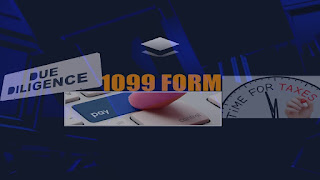Form 1099 Due Diligence: How to Minimize Errors
OVERVIEW
This webinar will cover the latest updates for Form 1099-MISC,
specific reporting requirements for various types of payments and payees,
filing requirements, withholding requirements and reporting guidelines. It will
cover important changes to the filing due dates and the new safe harbor
requirements for de minimis dollar amount errors. It will also cover penalty
provisions and exceptions to the penalties, due diligence procedures,
exceptions to penalties including reasonable cause, common errors, and correction
of errors.
WHY SHOULD YOU ATTEND
The changes in reporting requirements can be confusing and the
IRS has recently made changes to reporting, error correction, and filing due
date requirements. Accounts payable professionals, managers, and withholding agents
need to be aware of the changes in order to avoid non-compliance and penalties.
Penalties for non-compliance have recently been increased. In order to stay
compliant, practitioners must know which form to use to report specific
transactions, when forms must be filed or furnished to recipients in order to
be on-time, which information to include and how to make sure it is accurate,
how and when to make corrections, how to avoid or mitigate errors, whether a
particular payee is subject to backup withholding, or transaction
reporting, and the due diligence procedures that shield an issuer from
penalties even when the forms contain incorrect information
 |
| Form 1099 Due Diligence |
AREAS COVERED
- Reminders & What’s New
- Changes to filing deadlines and affected returns
- New de minimis exception for money errors
- Increases in penalties for non-compliance
- Information Returns
- Overview of information returns
- Resources for compliance
- A walk through Form 1099-MISC
- Identification of reportable payments and payees
- Correcting Errors
- Common 1099 errors – how to prevent them and how to
correct them
- SSN, TIN, EIN
- Taxpayer identification number basics: Which number to
use
- Documentation that established reportable and
non-reportable payees
- TIN Solicitation & “B” Notices
- Due diligence procedures avoid or mitigate penalties
for missing or incorrect payee tax ID numbers
- “B” notice procedures: When to issue and how to
follow-up
- TIN Verification
- Using the IRS TIN verification system
- Backup Withholding
- What it is
- When to start and when to stop
- How to deposit and report
- Penalties and problems
- Procedures and policies that establish
"reasonable cause" and avoid penalties
LEARNING OBJECTIVES
- Know when to furnish and file information returns under
the new requirements
- Understand the new de minimus error rules
- Identify reportable payments and payees. Know when a
1099 is required
- Be aware of common 1099 errors: Know how to avoid them
and how to correct them
- Understand backup withholding: What it is; When to
start and when to stop; How to deposit and report.
- Know the due diligence procedures to avoid penalties
for missing or incorrect payee tax ID numbers
- Understand the procedures for "B" notices:
When to issue and how to follow-up
- Know when the payment card rules apply and how 1099
reporting is affected
- Understand how to document independent contractor as
reportable or non-reportable
- Know the procedures and policies that establish
"reasonable cause" and avoid penalties
WHO WILL BENEFIT
- CFOs and controllers
- Accounts payable and accounting managers
- Accounts payable processing professionals
- Employers and Business owners
- Purchasing managers and professionals
- Public accountants, CPAs and Enrolled Agents
For more detail please click on this below link:
Email: support@trainingdoyens.com
Toll Free: +1-888-300-8494
Tel: +1-720-996-1616
Fax: +1-888-909-1882



Comments
Post a Comment